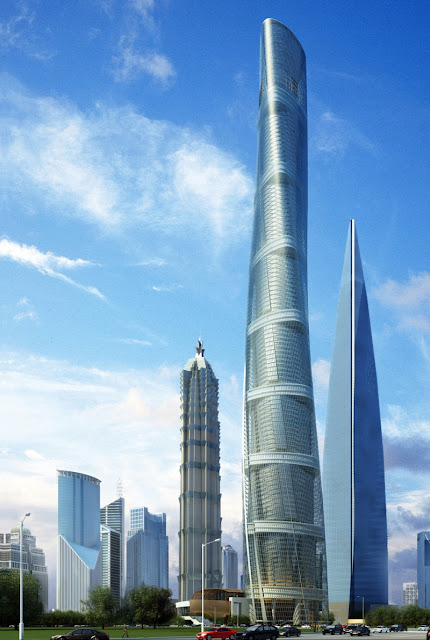The Great Mosque of Bani Umayya, جامع بني أمية الكبير
جامع بني أمية الكبير، ويعرف اختصارًا بالجامع الأموي، هو المسجدالذي أمر الوليد بن عبد الملك بتشييده في دمشق، ويُعد رابع أشهر المساجد الإسلامية بعد حرمي مكة والمدينة والمسجد الأقصى، كما يُعد واحدًا من أفخم المساجد الإسلامية، وأحد عجائب الإسلام السبعة في العالم.
يحوي الجامع على مدفن جسد يوحنا المعمدان - النبييحيى - نسيب المسيح،
كما يحوي المسجد أيضًا على الفتحة التي وضع فيها رأس الحسين بن علي حين حمل إلى دمشق، وألحق بالمسجد مقبرة تضم رفات صلاح الدين الأيوبي.
أرضية المسجد الأموي هي مستطيلة
ويحتل الفناء الجزء الأكبر من المسجد وهو يغطي الجزء الشمالي من المسجد ، في حين يغطي حرم الجامعالجزء الجنوبي من المسجد.
التأثيرات الهندسية على المسجد
المسجد الأموي هو أحد المساجد القليلة في العالم الإسلامي التي حافظت على نفس الهيكل العام والمعالم المعمارية ،منذ بنائه الأول في وقت مبكر من القرن الثامن ، وطابعه الأموي لم يتغير إلى حد كبير. ومنذ إنشائه، أستعمل المسجد لتأدية صلاة الجماعة في سوريا، ولجميع أنحاء العالم الإسلامي. ووفقا لمؤرخ فينبار باري فلوود، "بناء مسجد دمشق لم يغير المشهد الحضري لمدينة دمشق فقط، بل أكد أثر هيمنة العمارة الأموية في العالم الإسلامي، وأضاف المسجد الأموي في دمشق بعدا أخر في عمارة المساجد في سوريا والعالم الإسلامي بشكل عام".
يحوي الجامع على مدفن جسد يوحنا المعمدان - النبييحيى - نسيب المسيح،
كما يحوي المسجد أيضًا على الفتحة التي وضع فيها رأس الحسين بن علي حين حمل إلى دمشق، وألحق بالمسجد مقبرة تضم رفات صلاح الدين الأيوبي.
أرضية المسجد الأموي هي مستطيلة
ويحتل الفناء الجزء الأكبر من المسجد وهو يغطي الجزء الشمالي من المسجد ، في حين يغطي حرم الجامعالجزء الجنوبي من المسجد.
التأثيرات الهندسية على المسجد
المسجد الأموي هو أحد المساجد القليلة في العالم الإسلامي التي حافظت على نفس الهيكل العام والمعالم المعمارية ،منذ بنائه الأول في وقت مبكر من القرن الثامن ، وطابعه الأموي لم يتغير إلى حد كبير. ومنذ إنشائه، أستعمل المسجد لتأدية صلاة الجماعة في سوريا، ولجميع أنحاء العالم الإسلامي. ووفقا لمؤرخ فينبار باري فلوود، "بناء مسجد دمشق لم يغير المشهد الحضري لمدينة دمشق فقط، بل أكد أثر هيمنة العمارة الأموية في العالم الإسلامي، وأضاف المسجد الأموي في دمشق بعدا أخر في عمارة المساجد في سوريا والعالم الإسلامي بشكل عام".
The Great Mosque of Bani Umayya, known as the Umayyad Mosque, is the mosque that Alwaleed bin Abdul Malik ordered to build in Damascus.It is the fourth most famous Islamic mosque after the sanctuaries of Mecca, Medina and Al-Aqsa Mosque.It is also one of the most luxurious Islamic mosques and one of the seven wonders of Islam in the world.
The mosque contains the tomb of the body of John the Baptist - the prophet - the relative of Christ,
The mosque also contains the hole in which the head of Hussein bin Ali was placed when he was carried to Damascus, and the mosque was attached to a cemetery containing the remains of Saladin.
The floor of the Umayyad Mosque is rectangular
The courtyard occupies the largest part of the mosque and covers the northern part of the mosque, while the campus of the mosque covers the southern part of the mosque.
Engineering influences on the mosque
The Umayyad Mosque is one of the few mosques in the Islamic world that has maintained the same general structure and architectural monuments, since its first construction in the early eighth century, and its Umayyad character has largely changed. Since its inception, the mosque has been used to perform congregational prayers in Syria and throughout the Muslim world. According to Finbar historian Barry Flowood, "the construction of the Damascus Mosque has not only changed the urban landscape of Damascus, but has also confirmed the influence of Umayyad architecture in the Islamic world. The Umayyad Mosque in Damascus added another dimension to the building of mosques in Syria and the Muslim world in general."



